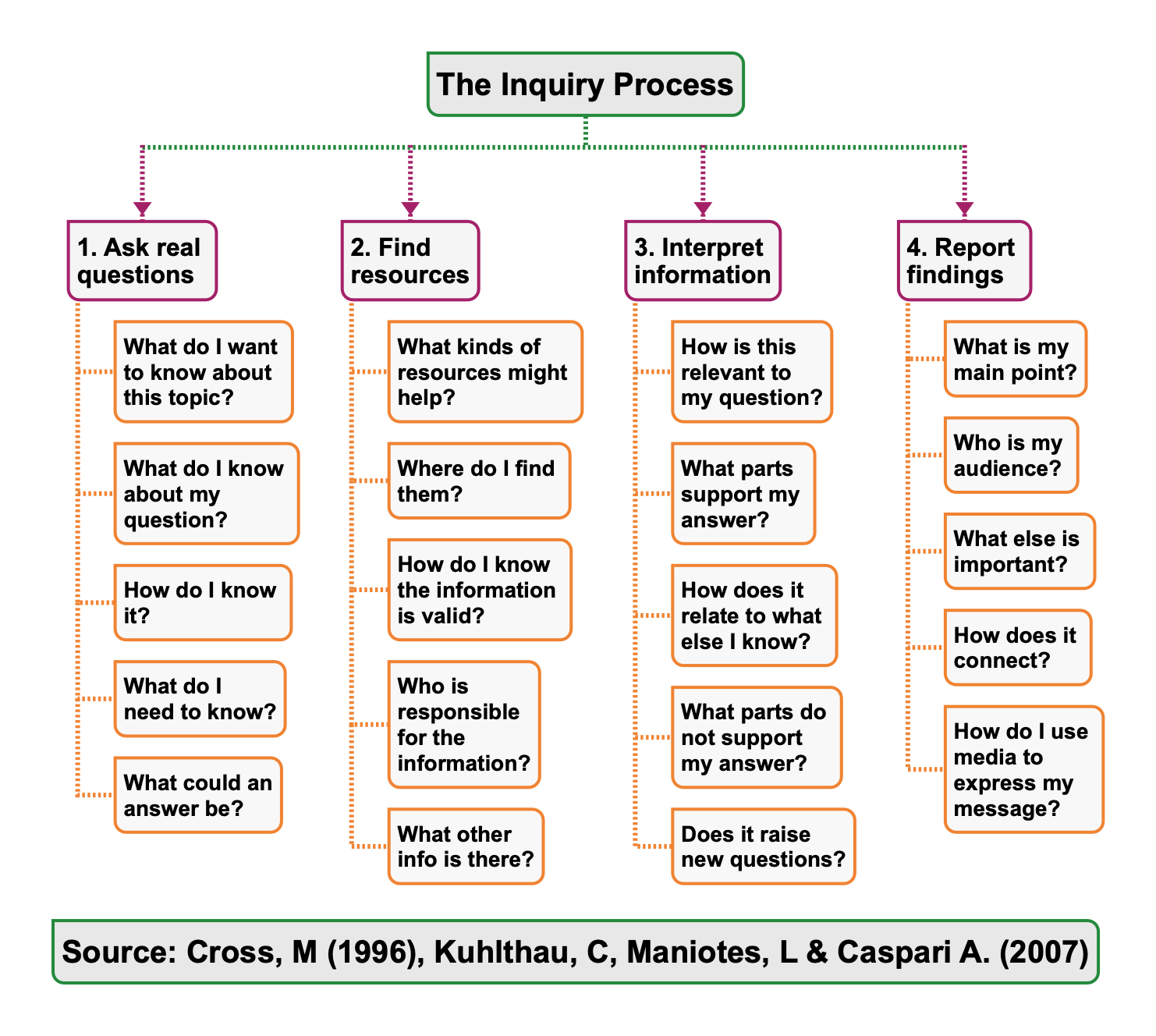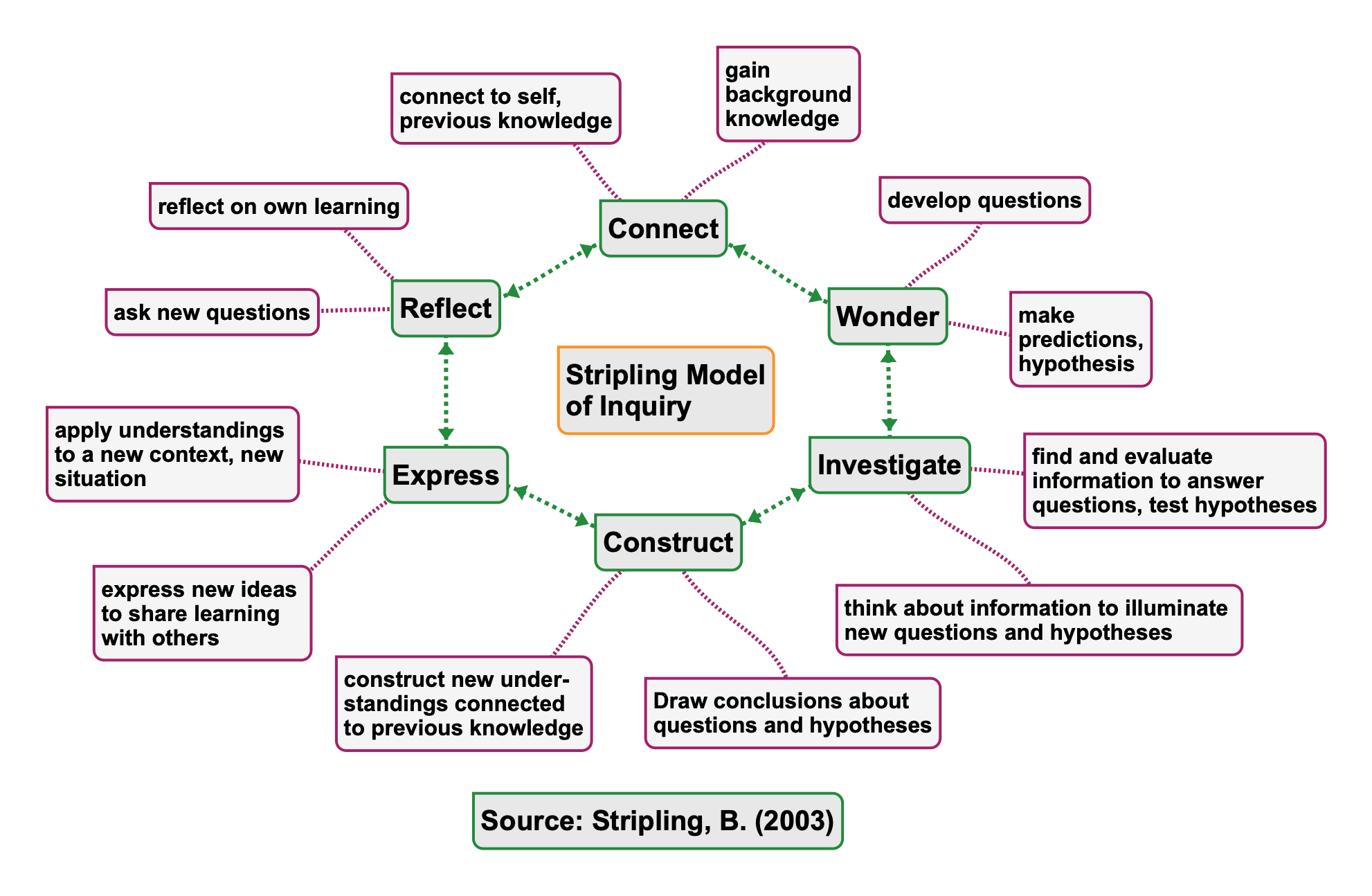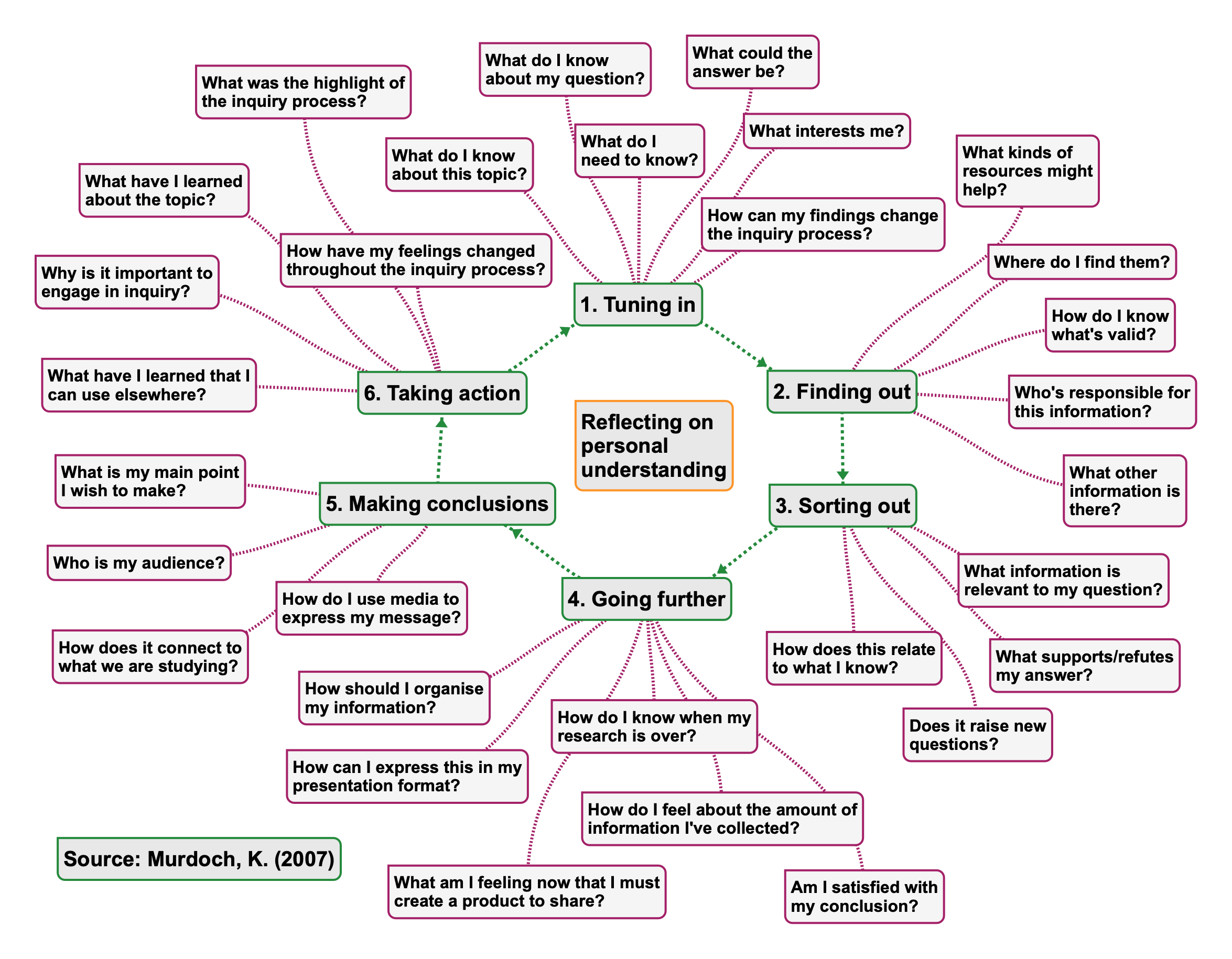Models of inquiry
'Inquiry-based learning' is a method of learning, in which the student's curiosity is central to the learning process. Have you already asked yourself: 'What do I already know about my topic, subject and question?' or: 'What do I want to find out? The KWL diagram is a good starting point to a larger road map. If the Extended Essay is an exercise in inquiry, then it helps to know what inquiry looks like. Here is a snapshot:

This page offers you 3 models of inquiry. Click on each model below to open it and enlarge it. In pairs, discuss your answers to the following questions:
-
Think of a project that you worked on recently, which was not related to school. It can be anything, from fixing something in your house to organising a sporting event. How can you use one of the three models of inquiry below to describe your engagement with this project? How might this project be similar to or different from the Extended Essay?
-
Which model best reflects how you think and work? Is there a better model? Do an online search for other models of inquiry and discuss with a partner which one best captures the way you think and work. What makes each model more or less effective?
-
Where are you in your EE journey? Describe what you are working on, what you have done and what you plan to do, either in relation to your own essay or one that you are supervising. Refer to stages from one or more of the models of inquiry below.
-
Have you already set up a Researcher's Reflection Space (RRS), which is a fancy word for 'notebook' or 'jounal'? How can you incorporate ideas from the models below into your RRS? How can these models help you 'set up' an RRS? Discuss.
TOK
How are these models of inquiry relevant to Theory of Knowledge (TOK)? TOK, or epistemology, is the study of how you know what you think you know. These models of inquiry can help you answer the question: How do you know?


